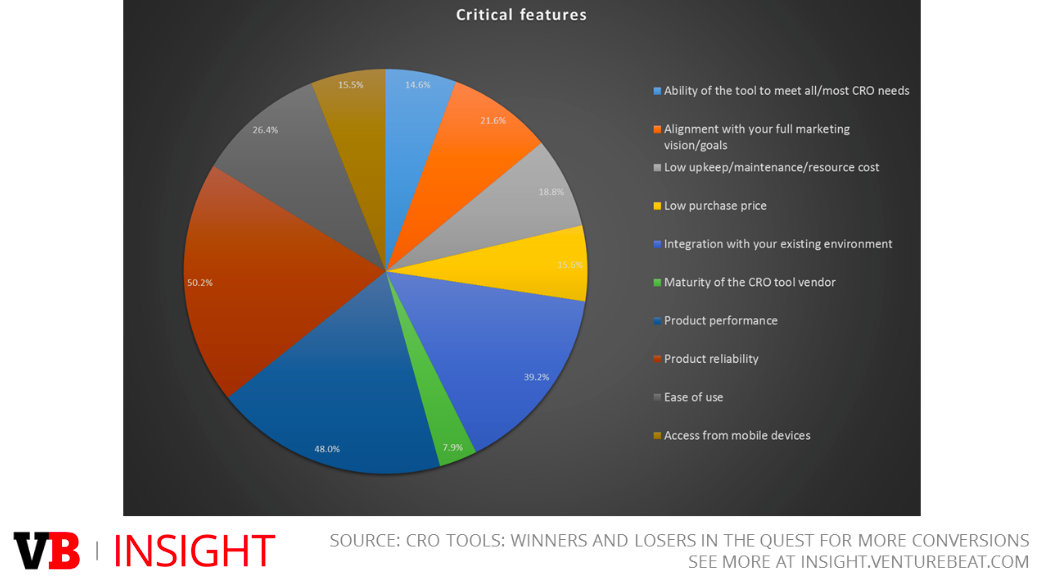When it comes to lead generation and ROI, marketers are looking for two things; performance and consistency. Regardless of the channel, format or device the one constant that ultimately determines performance is marketing design.
| Channel | Format | Device |
| Social | Contextual | Desktop/Laptop |
| Search | Display | Tablet |
| Native | Phone | |
| Website | Rich Media/Video | Wearable |
| App | Digital radio | Smart TV |
Consider that the first online ad went live in 1994, yet, 20 years later we continue to find ourselves investing time, resources and budget into marketing design optimization.
Truth is, the majority of marketers do not understand marketing design.
The reason? The ever-changing ad channels and formats across three core devices (desktop/laptop, mobile, tablet) and two up and coming devices (wearables, smart TV). The landscape is changing daily and the ratio of ad options vs. statistically significant data is overwhelmingly difficult to comprehend without the help of automated technology platforms.
For marketers, it’s clear (and justified) from VB Insight’s latest report that spending $500 – $1,000 a month for data intelligence and optimization specific to conversion optimization across all of these channels, formats, and devices is a now considered a cost of doing business.
One new tool helping marketers grasp the current state of marketing design is Crayon (full disclosure, I’m an advisor). Serving as the Pinterest for marketers meets new age swipe file, Crayon answers the call for creative, inspiration and data collection with over 13 million filterable pages.
Marketers can build their own collections and projects based on their specific needs including page type, industry, CMS, device…etc. Using a tool like Crayon, is step 1 for marketers.
Step 2 is to consider conversion/performance analytics tools, of which there are many. VB Insight’s most recent report on conversion optimization evaluated 36 vendors (such as Google Analytics, Optimizely, Kissmetrics, Mixpanel) 2,938 marketers and 3.1M websites.
One finding from VB Insight’s research comes from the “critical features” section of the report. Examine the pie chart and data below, a sneak peak into the Conversion Optimization report.
Let’s first analyze the response data:
| Top 10 features deemed critical for conversion rate optimization (CRO) tools | % of Marketers that agree feature is critical |
| Product reliability | 50% |
| Product performance | 48% |
| Integration with existing systems | 39% |
| Ease of use | 26% |
| Alignment with marketing goals | 21% |
| Low upkeep/maintenance/resource cost | 19% |
| Access from mobile | 16% |
| Ability to meet all CRO needs | 15% |
| Low purchase price | 15% |
| Maturity of vendor | 8% |
What strikes you as intriguing about this response data? Across the board, the overall percentages are low. None of the features deemed critical produced a response rate of over 50 percent. This suggest two things. First, marketers aren’t expecting enough out of their CRO tools. Perhaps this is because most use Google Analytics which as a free tool is great to have and hard to complain about. Second, the majority of marketers aren’t applying their CRO tools in the appropriate manner.
Want to hear what the experts have to say?
Join us for our live webinar on conversion optimization.
How is it that 50 percent of marketers don’t think product reliability is critical? Furthermore, how is it that 62 percent of marketers don’t think product performance is critical? Those are the two reasons why you utilize a CRO tool. What this data says is that the CRO market is still incredibly new, and in dyer need of market education and capability training specific to marketing design.
The benefits of properly utilizing CRO tools are vast, and there are a number of exceptionally smart companies offering everything from agency service to SaaS, but with all of the changing market dynamics, behavioral trends, and devices, it will take a bit more time for this function to cross the chasm.
The two essential things for marketers to do in hopes of better understanding market design and analytics utilization is as follows:
1) Learn
The CRO landscape is fairly new and more importantly constantly changing. You need to stay up to date on the trends and capabilities which isn’t easy. It’s something that you or a member of your team needs to sincerely invest time in, and not just check in once in a while. We suggest three areas of learning for you to consider:
Reports – Below are a few examples of reports that can be useful as you dive deeper into the CRO space:
- Conversion Rate Experts – Conversion Rate Secrets of a million dollar landing page
- Econsultancy – Consultancy Optimization Report 2014
- VB Insight – Conversion Optimization – Win at Performance Marketing in 2015
Vendor blogs – Researching vendor blogs is a great way to gauge whether or not a company is serious about thought leadership, education and employing competent marketers. A few examples include:
- Kiss Metrics – Analytics, marketing & testing
- Optimizely blog – Conversion rate optimism
- Adobe blog – Digital marketing trends and reports
Evangelists & Events – Follow and learn as much as you can from the distinguished leaders in the CRO space:
- PPC Hero – Top 25 CRO experts
- VentureBeat – 2015 Events for all things marketing, mobile & growth
- SMB Conferences – There are a few events listed here thanks to Unbounce such as MozCon and Inbound, which tend to be more SMB focused but can be quite useful to teams looking to learn.
2) Practice
Receiving proper training from your CRO vendor is critical in order for employees to fully adopt a new tool. There’s a reason why LinkedIn just bought Lynda for $1.5B. Training isn’t easy, but when done right it is wildly effective. Set up learning sessions with your vendor as well as your internal team. Identify what works, what doesn’t, and how you can implement your CRO capabilities further into your organization. It’s okay to expect too much from your CRO tool, just don’t underestimate the benefits and capabilities.
In the end, the most successful companies utilizing CRO tools for their marketing design will be the ones that work at it and invest the appropriate time and resources. While the teams building CRO tools may be rocket and data scientists, most of the tools are actually fairly easy to use. Although easy to use, CRO tools take time to master. So take the time, learn, and practice. It’s the same advice we give anyone looking to become an expert in anything, the only difference is those who take that advice seriously vs. those who don’t.
To learn more about all the latest happenings with Conversion Rate Optimization, be sure to get VB Insight’s brand new report!
VentureBeat's mission is to be a digital town square for technical decision-makers to gain knowledge about transformative enterprise technology and transact. Learn More



